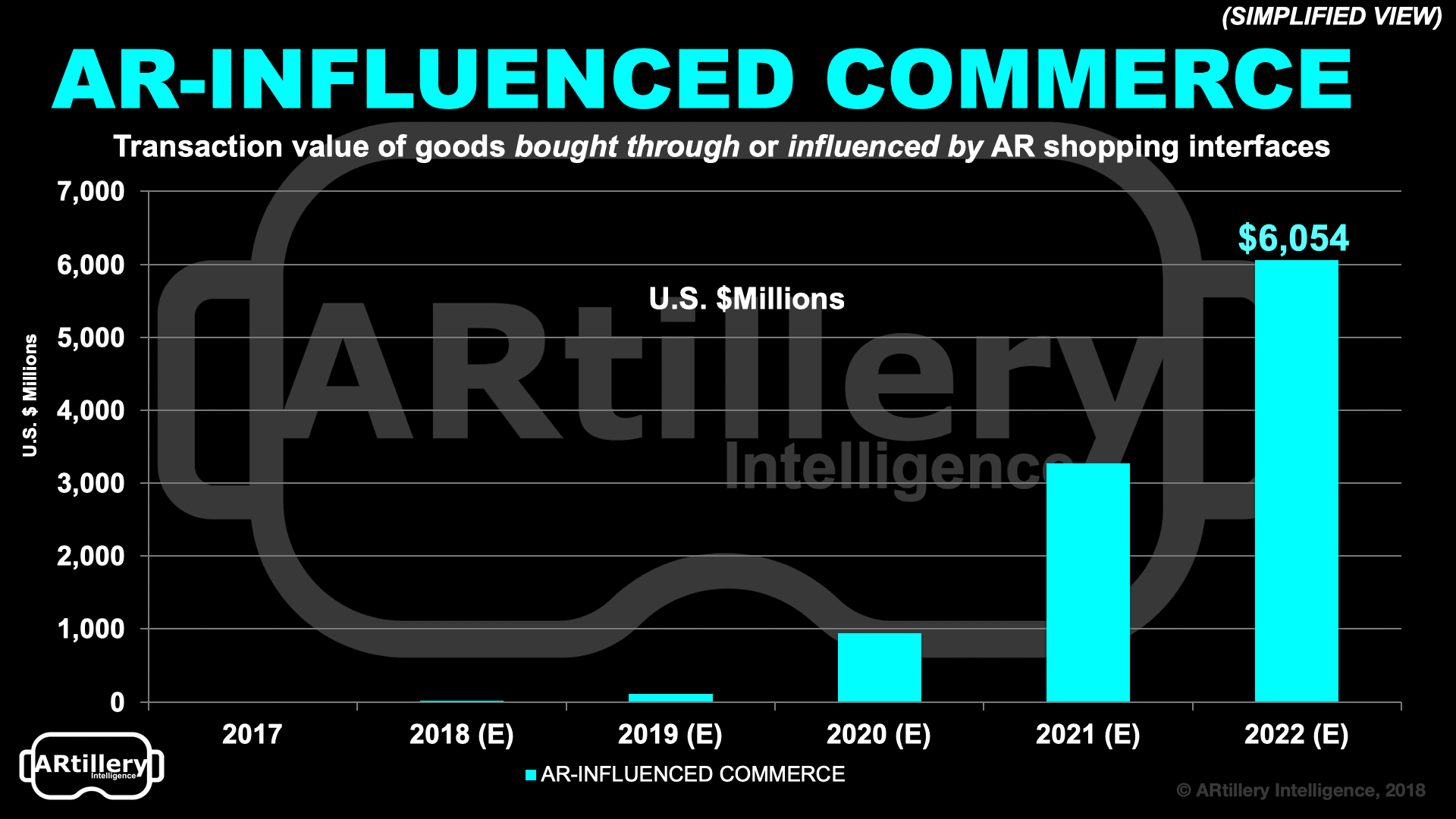
This post is adapted from ARtillery Intelligence’s latest report, AR Commerce: Monetization Comes Into View. It includes some of its data and takeaways. More can be previewed here and subscribe for the full report.
There are several forms of monetization that will develop for augmented reality (AR). In past reports, we’ve examined opportunities for its role in advertising (consumer-facing) and industrial productivity (enterprise-facing). The ROI case continues to strengthen in these and other areas.
One particularly promising area will be AR’s role in influencing and fulfilling consumer purchases. Extending from (but different than) AR advertising, AR commerce involves graphical overlays that inform consumers and demonstrate product attributes in physical retail or e-commerce contexts.
For example, AR-pioneering retailers like Walmart let consumers activate product details in store aisles by pointing their smartphones at those items. Employing computer vision and object recognition from product databases, this empowers shoppers and breeds customer loyalty.

Tech giants like Google and Amazon have done similar. By pointing your phone at items in the real world, informational overlays can be triggered to contextualize items. Moreover, transactional calls to action are included to capture consumers’ wallets during these high-intent visual searches.
This makes AR commerce a key part of the future of these tech giants’ user experiences – mapping closely to their core businesses like search and e-commerce. It therefore holds lots of priority and investment – both of which will accelerate this sub-sector of AR in the near term.
Beyond visual search (pointing your phone at items to contextualize or buy), AR commerce can work in the reverse manner. In other words, “product visualization” is a key AR commerce modality in which consumers digitally place 3D product mockups in their surroundings to see how/if they fit.

As you can imagine, this use case maps particularly well to home goods, or large and bulky items that require a more informed purchase in terms of fit and style. For that reason, furniture players like Wayfair and IKEA have invested in such AR features, as have auto manufacturers like BMW.
Add all of these factors together and AR commerce will be one of the most tangible and revenue-generating “flavors” of AR in the near term. ARtillery Intelligence projects that $6.1 billion in annual transaction value (value of goods purchased) will flow through AR interfaces by 2022.
Beyond near-term benefits and monetization, mobile AR commerce developments will serve a longer-term end: AR glasses. The tactics, business models and consumer acclimation that happen around smartphones will seed next decade’s glasses-based AR commerce – the real endgame.
See more details about this report here.
For deeper XR data and intelligence, join ARtillery PRO and subscribe to the free AR Insider Weekly newsletter.
Disclosure: AR Insider has no financial stake in the companies mentioned in this post, nor received payment for its production. Disclosure and ethics policy can be seen here.
